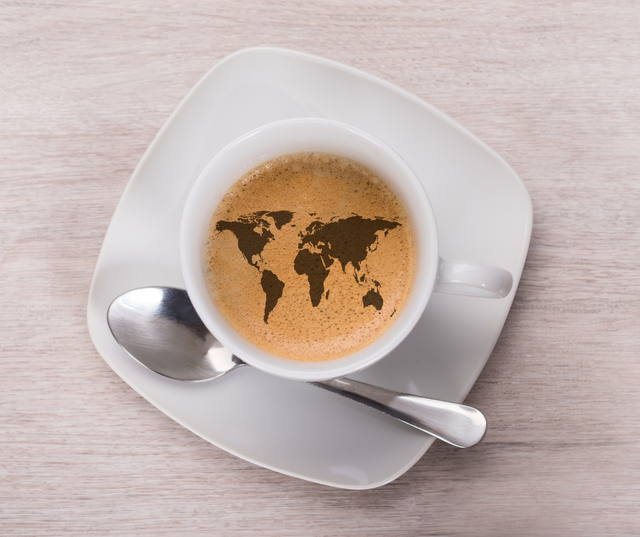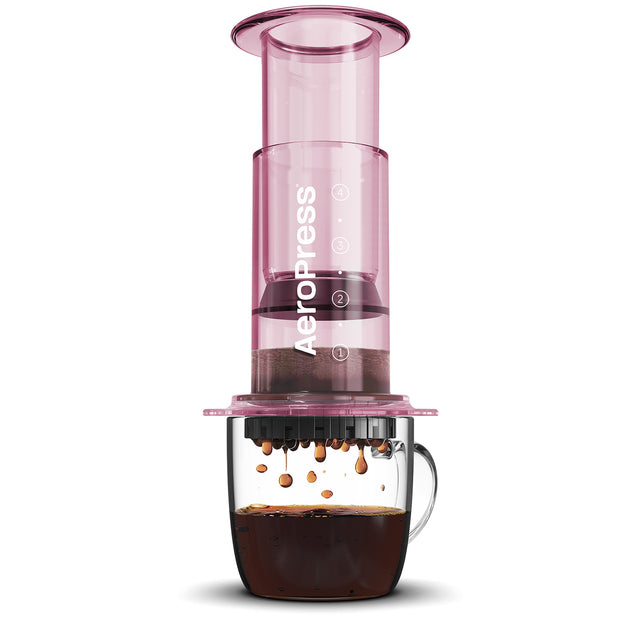Weird and Wonderful Coffee Around the World
With coffee being the most popular beverage in the world, seeing more than 400 billion cups drunk each year, it should come as no surprise that there are a wide variety of coffee options available. While many of these will vary only in the roastery techniques used, or whether it is brewed in an espresso machine or a travel coffee maker, some coffee types take things a little further. We take a look at seven of the most unusual cups of coffee available around the world.

Vietnamese Cà Phê Trứng
Also known as Silky Egg Coffee, Cà Phê Trứng from Vietnam is made using Vietnamese coffee, condensed milk and egg yolk. Vietnamese coffee will be made from Robusta beans, offering a caffeinated, but slightly bitter sip. The coffee is topped with a mixture of sweetened condensed milk and egg yolk, which is whisked together to form a thick and creamy layer. The sweetness from the condensed milk helps to balance out the bitterness of the coffee, providing a rich, smooth and flavourful sip.
The drink is believed to have been invented during the 1940s in Hanoi. It is thought that a barman at the Sofitel Legend Metropole Hanoi Hotel used this condensed milk and egg yolk mixture for the coffee, having run out of regular milk!
Finnish Kaffeost
Translating to ‘coffee cheese’, Kaffeost brings together two beloved treats – coffee and cheese! Using chunks of juustoleipä, a type of cheese also known as ‘squeaky cheese’, espresso is poured over, allowing the cheese to be softened by the liquid. The cheese is then eaten with a spoon, or enjoyed with some sweet crackers.

Turkish Türk Kahvesi
While the coffee itself isn’t particularly weird, there is certainly something unique about the way the coffee is prepared and drunk. Turkish coffee is left unfiltered when it is brewed, meaning that it is very strong. It also means that you drink the coffee grounds. Any coffee grounds that remain in the cup can then be used to tell your fortune! While many coffee drinkers wouldn’t dare not filter their coffee, Turkish baristas must be getting something right, as this type of coffee is on the Unesco Representative List of the Intangible Cultural Heritage of Humanity!
Taiwanese Monkey Spit Coffee
Taiwanese coffee farmers were once irritated by the Formosan Rock Monkeys that once stole the ripe coffee berries, only to spit out the half-chewed beans. However, things changed when the farmers realised that the beans chewed by the monkeys had gained a sweeter flavour, with hints of vanilla. This sweet, vanilla scent is believed to be caused by the floral diet enjoyed by the monkey’s when they’re not snacking on coffee berries! Despite having once been in a monkey’s mouth, this coffee is something of a gourmet speciality, and is quite a hit in Taiwan. Who doesn’t love monkey spit in their coffee?!

Mexican Café de Olla
A tasty treat awaits coffee lovers in Mexico, with the traditional brew Café de Olla. Not ones to forgo a flavourful, and subtly spicy kick, traditional Mexican coffee is drunk with a hefty pinch of cloves, cinnamon, anise and piloncillo (unrefined cane sugar). Literally translating to ‘coffee pot’, café del olla is prepared in a traditional clay pot, which is said to impart a special flavour to the coffee.
Thai Elephant Dung Coffee
The world’s rarest and most expensive coffee, Black Ivory Coffee is created using the help of some elephant poo! The elephants are fed the coffee cherries, and their digestive process helps to break down the protein in the coffee cherry. This helps to refine the beans and remove bitterness. Within the elephant’s stomach, the coffee cherries are fermented, which develops the sugars and flavours in the coffee bean. The digested beans are then collected from the elephant’s dung. Coffee brewed from these beans is said to taste like deep cherry and chocolate!
Indonesian Kopi Luwak
Another poo-themed coffee, the Kopi Luwak from Indonesia is made using beans that have passed through the civet – a cat-like mammal. When civets eat the berries, they digest the flesh from the cherry, but pass the coffee bean. The enzymes within the civet’s stomach also add to the flavour and aroma of the coffee. The beans are then hand-picked from the civet’s faeces, washed, roasted and sterilised. While such a coffee may not sound appealing to all, it is a prized brew, with some parts of the world seeing cups sold for £80!
Which of these would you give a try? Leave a comment below to let us know!


1 Comment
The Vietnamese egg coffee is remarkably nice, to the extent that I have now started making it at home in England following a visit to Hanoi earlier this year.